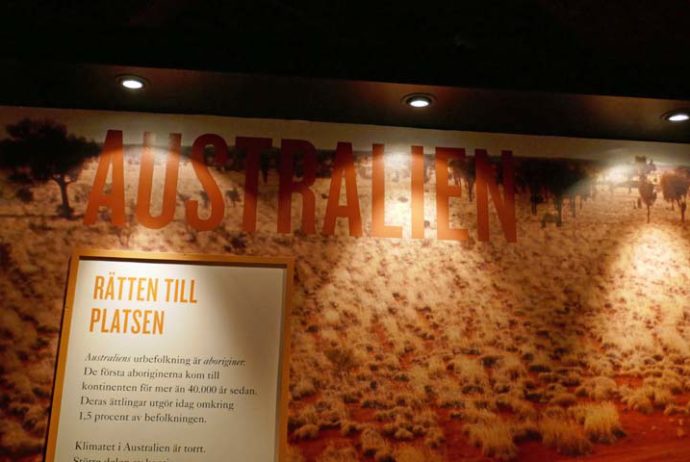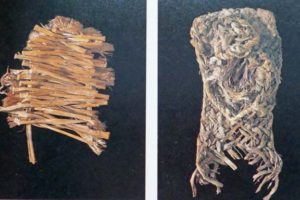More from the Stockholm Ethnographic Museum
The museum included an exhibit room for items from Australia. Here, I found one of the most intriguing straw sandals. All of the text cards were in Swedish, of course! My friend and colleague John Eriksson translated them for us:
Sunday Island, Australia
Sandals
These sandals are made of the bark from a young tree. The Bark is
first made softer by chewing the bark.
No. 1912.0.1.0922 Kimberley, Australia
These sandals, braided/plaited using the inner bark from a young tree,
represent another example of a clever technology. These sandals could
be made in just a few minutes and they protected the feet when the
ground was too hot to tread. The sandals could also be used when their
owner did not want to disclose his/her identity. Familiar footprints
were disguised by these sandals.
___________________
One card gave an origin, Sunday Islands, Australia, and also mentioned Kimberley, Australia. This was very helpful as there are at least three islands named Sunday island in Australia, and the Sunday Islands (plural) are actually an independent republic, the closest land mass being Antarctica apparently.
So here goes my interpretation. Kimberley is often used to mean The Kimberley, the most northern part of Western Australia. It is remote and ruggedly beautiful with only about 40,000 inhabitants, including Aboriginal peoples. There is a Sunday Island off its coast in King Sound, so I assume this is the one we want. I found a description that said it is the traditional land of the Diaui people and has been for thousands of years. Another source indicated that the traditional owners and original inhabitants of the area around King Sound are the Nimanburu, Njulnjul and Warwa indigenous Australian peoples. Apparently another tribe, The Bardi, operates tours to the island.
I have had very little success finding straw footwear from Australia that may be attributable to the native peoples. It would be quite a find if these bark sandals were made using an ancient handicraft from this region. They are about as simple a construction is it gets, more wrapped bark strips than actually woven, though some simple weaving described in the exhibit card as plaiting, can be seen. Sandals like these would be fashioned quickly as needed and were not meant to last much beyond an immediate need. I would love to know their age!
______________
The sandals found in Australia have some remarkable similarities in construction to the ancient sandals made by the Anasazi peoples of the southwestern United States:
Anasazi sandals from southwest U.S. made by plain weaving on left and plaiting/braiding on right. The sandal fragment on the left has two warps (passive elements), is a weft-faced weave, and the material used are yucca leaf elements, unspun and with intact cortex.
_______________






